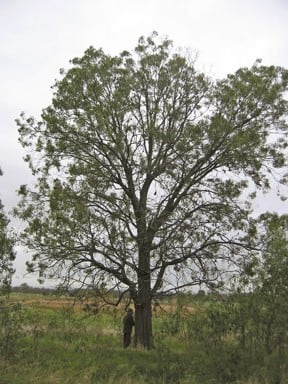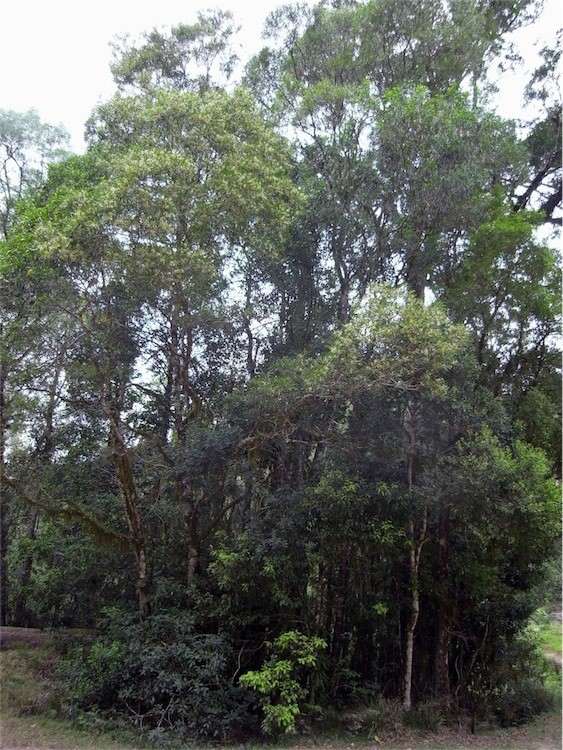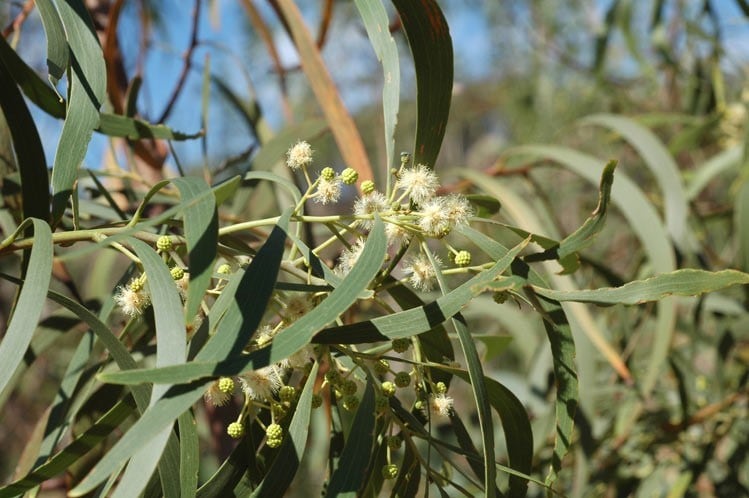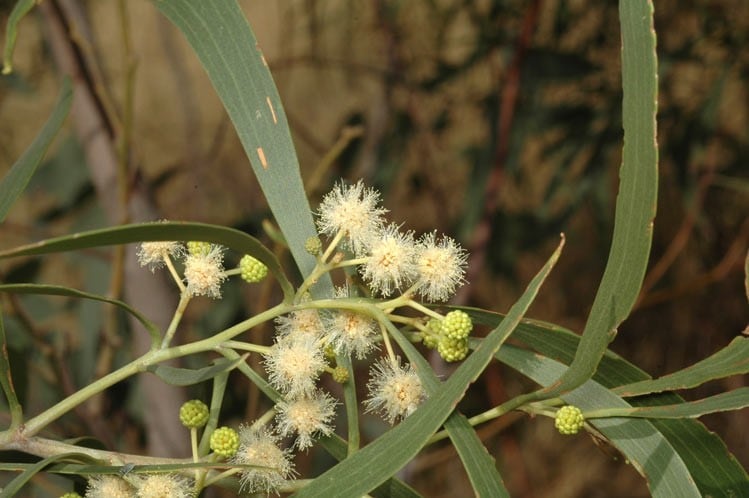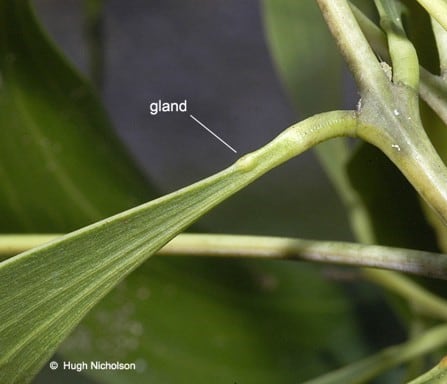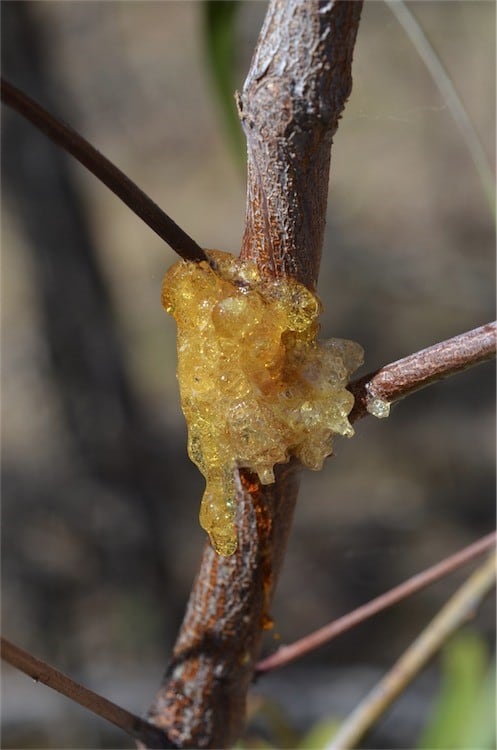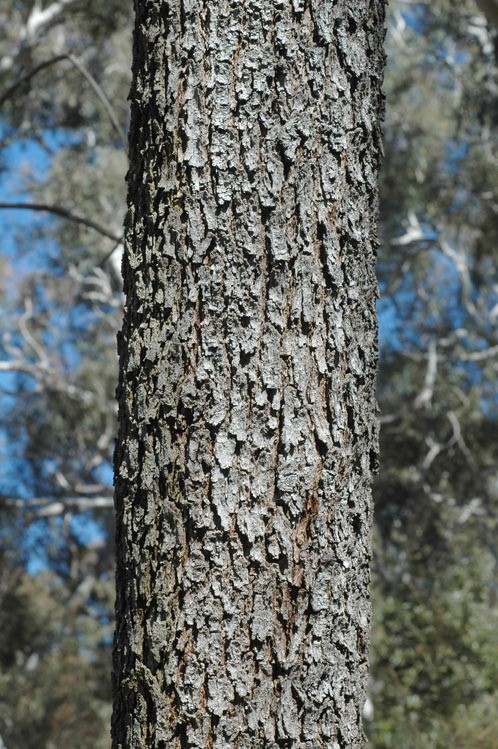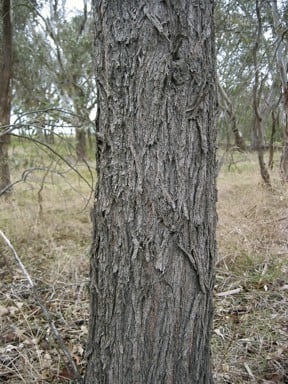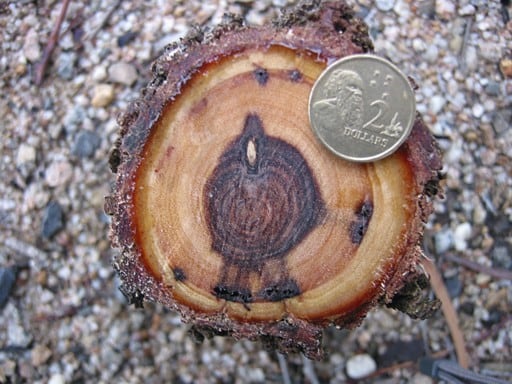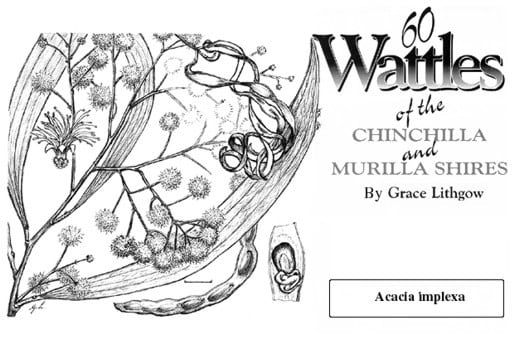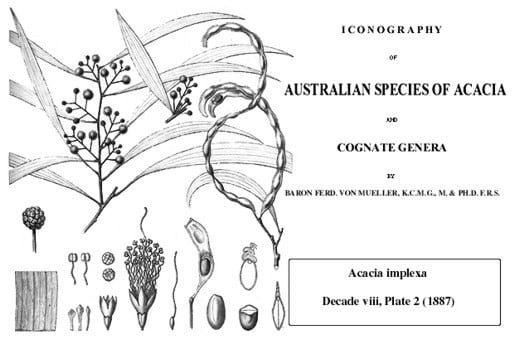Acacia implexa Benth.
WATTLE
Acacias of Australia
Common Name
Lightwood, Hickory Wattle, Screw-pod Wattle, Bastard Myall, Lignum Vitae, Fish Wattle, Broad-leaf Wattle, Weetjellan (D’harawal)
Family
Fabaceae
Distribution
Widespread and sometimes common, occurring in Qld on the Atherton Tableland and then from Shoalwater Bay S along the coast and tablelands through eastern N.S.W. and Vic. to Port Phillip Bay, and also on King Is., Tas.
Description
Tree 3–15 m high, often gregarious due to suckering; bipinnate leaves may persist on young plants. Bark rough, greyish. Branchlets terete, not prominently ribbed, commonly lightly pruinose, glabrous. Phyllodes narrowly elliptic, falcate, 7–20 (–35) cm long, 6–25 mm wide, much-narrowed at base, acute to acuminate, sometimes ±obtuse, thinly coriaceous, green, glabrous, with 3–7 main nerves and numerous longitudinally anastomosing minor nerves in between. Inflorescences 4–8-headed racemes; raceme axes 10–45 (–60) mm long, glabrous; peduncles 6–15 mm long; heads globular, 5–6 mm diam., 30–52-flowered, pale yellow to ±white. Flowers 5-merous; sepals 3/4-united. Pods linear, coiled and twisted, to 25 cm long, 4–7 mm wide, ±woody or thick-coriaceous, glabrous. Seeds longitudinal, oblong-oval, 4–5 mm long, subglossy, dark brown; funicle/aril fleshy, white, folded beneath the seed.
Habitat
Grows in a variety of situations but often in shallow soil on hills in open forest.
Specimens
Qld: Binna Burra, Lamington Natl Park, R.Cumming 3154 (PERTH). N.S.W.: Dungay Ck road, I.B.Armitage 1537 (NSW, PERTH). A.C.T.: c. 2 km N of Mt Majura, A.M.Lyne 106 (PERTH). Vic.: Briagolong State Forest, A.C.Beauglehole 77464 (MEL, PERTH). Tas.: King Is., May 1944, A.D.Hardy (MEL).
Notes
Acacia implexa var. brevipes (A.Cunn.) Domin, which G.Bentham, Fl. Austral. 2: 389 (1864), had suggested appeared to be a variety of A. melanoxylon, is distinct from both species. According to L.Pedley, Austrobaileya 1: 223 (1978), it is conspecific with the Hawaiian A. heterophylla Hook. & Arn. (= A. koa A.Gray). The type of A. brevipes A.Cunn., described from cultivated material, is at Herb. K and this disposition appears to be correct, insofar as comparative material we have seen of A. koa.
Often confused with A. melanoxylon.
Based on gross morphology of R.Coveny 5485 (BRI, CANB, K, NSW, PERTH), A. implexa possibly hybridises with A. trinervata at Grose Wold, N.S.W.
As reported by G.M.Cunningham et al., Pl. W New South Wales 364 (1981), stock deaths have been caused by ingestion of green pods and the wood has been used for turning, furniture making and for fuel. Further information on the biological and ecological features, and the utilisation potential, of this species is given in B.R.Maslin and M.W.McDonald, AcaciaSearch: Evaluation of Acacia as a woody crop option for southern Australia, RIRDC Publication No. 03/017, 98–102 (2004).
FOA Reference
Data derived from Flora of Australia Volumes 11A (2001), 11B (2001) and 12 (1998), products of ABRS, ©Commonwealth of Australia
Author
Minor edits by B.R.Maslin & J.Rogers
R.S.Cowan, B.R.Maslin
This identification key and fact sheets are available as a mobile application:
URL: https://apps.lucidcentral.org/wattle/
© Copyright 2018. All rights reserved.
